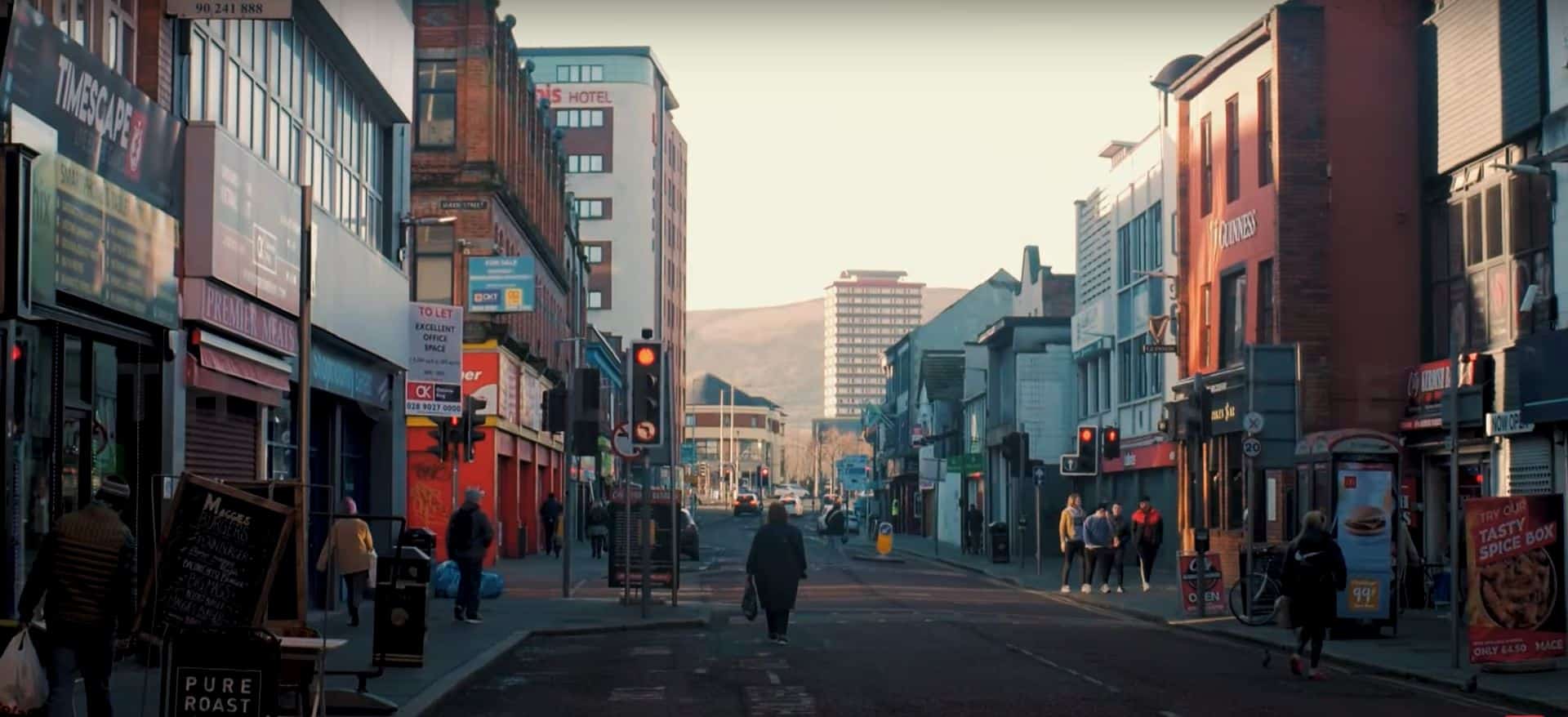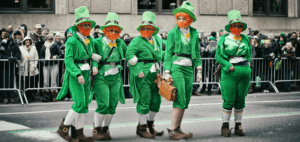The Gaeltacht Quarter | Belfast | Northern Ireland

Updated On: April 09, 2024 by Ahmed Samir
A journey to the United Kingdom will be like nothing before. However, Belfast has its own character. Your time in Northern Ireland will be divided between vibrant avenues, lovely museums, and inspiring parks.
Northern Ireland is a region known for its rich cultural heritage, stunning landscapes, and a complex history that has shaped its identity. Among the various cultural treasures that Northern Ireland has to offer, the Gaeltacht Quarter in Belfast stands out as a vibrant hub of Gaelic culture, language, and tradition. This unique enclave within the city has a rich history and continues to play a crucial role in preserving and promoting the Irish language and heritage. This article will explore the Gaeltacht Quarter’s origins, cultural significance, and ongoing efforts to keep the Gaelic flame alive in Belfast.
Optimal Timing for Your Belfast Adventure: Exploring the City’s Best Months
The best time to visit Belfast is from May to August in the late spring and summer months. During this period, the city experiences milder temperatures, longer daylight hours, and a vibrant atmosphere. The pleasant weather allows for outdoor activities, exploring the city’s historic sites, and enjoying festivals and events that come to life during these months. Additionally, the lush green landscapes surrounding Belfast are at their most picturesque during the summer, making it an ideal time for travellers to experience the natural beauty of Northern Ireland’s capital.
Belfast: A Tale of Transformation and Resilience
Belfast, the capital and largest city of Northern Ireland, boasts a rich history that reflects its journey from a small settlement to a bustling modern metropolis. Its story is a testament to the resilience and transformation of a city that has weathered significant challenges over the centuries.
Founded as a small settlement in the early 17th century, Belfast’s early years were marked by its strategic location on the banks of the River Lagan. It gradually evolved into a thriving port city, thanks to its proximity to Scotland and England, and its shipbuilding industry gained prominence. However, in the 19th century, Belfast came into its own as an industrial powerhouse. The shipyards of Harland and Wolff, where the infamous RMS Titanic was built, became symbols of the city’s prowess in shipbuilding, earning Belfast the moniker of “Linenopolis” due to its thriving linen industry and the “Titanic City” for its association with the ill-fated ship. This era of prosperity transformed Belfast into a vibrant hub of commerce and industry.
However, Belfast’s history is also marked by periods of conflict and political unrest, particularly during the late 20th century. The city became a focal point of “The Troubles,” a protracted conflict between nationalist Catholics and unionist Protestants over issues of identity and governance in Northern Ireland. The Troubles brought violence and instability to Belfast, leaving scars that are still visible today. However, through perseverance and the Good Friday Agreement of 1998, the city has made significant strides towards peace and reconciliation, ushering in a new era of hope and progress.
In recent years, Belfast has reinvented itself as a vibrant and culturally rich city, welcoming visitors worldwide. Its historic landmarks, such as the Titanic Belfast museum, showcase the city’s maritime heritage, while its thriving arts scene, dynamic culinary offerings, and lively music traditions reflect its diverse and resilient spirit. Today, Belfast symbolises transformation and reconciliation, inviting travellers to explore its compelling past and embrace its promising future.
A Historical Overview of the Gaeltacht Quarter
The Gaeltacht Quarter, often called “Ceathrú Ghaeltachta” in Irish, is located in the western part of Belfast, straddling the Falls Road and Shankill Road areas. Its history is deeply intertwined with the broader story of Irish nationalism and the preservation of the Irish language.
The origins of the Gaeltacht Quarter can be traced back to the late 19th and early 20th centuries when a wave of Irish language revival swept across Ireland. During this time, efforts were made to promote and preserve the Irish language, which was under threat of extinction due to centuries of English colonial rule. Belfast, being one of the largest cities in Northern Ireland, played a crucial role in this revival.
In the early 20th century, the Gaeltacht Quarter became a hub for Irish language enthusiasts, teachers, and cultural organizations. The area was home to several Irish-speaking families, and various institutions, such as Coláiste Feirste, a prominent Irish-medium school, were established to promote the language and culture.
Cultural Significance of the Gaeltacht Quarter
Today, the Gaeltacht Quarter symbolises resilience and cultural identity in Belfast. Its cultural significance is multi-faceted and extends to various aspects of Irish heritage:
- Language Revival: The Gaeltacht Quarter is at the forefront of Irish language revival efforts in Belfast. The area hosts Irish language classes, cultural events, and activities that provide a platform for people of all ages to learn and speak Irish. The preservation of the language is central to the Quarter’s mission.
- Arts and Music: The area is a hotbed of traditional Irish music and arts. Local musicians, poets, and artists celebrate their Gaelic heritage through performances and exhibitions. The famous An Cultúrlann Arts Centre is a focal point for these creative endeavours.
- Community Spirit: The Gaeltacht Quarter has a strong sense of community, with residents and visitors coming together to celebrate their shared heritage. Festivals like Féile and Phobail draw people from all backgrounds to celebrate Irish culture and promote inclusivity.
- Education: Educational institutions like Coláiste Feirste are pivotal in educating the younger generation in the Irish language and culture. This ensures that the Gaelic tradition is passed down to future generations.
- Tourism: The Gaeltacht Quarter has also become a tourist attraction in its own right. Visitors worldwide come to experience this area’s unique blend of Irish culture, history, and hospitality.
Preservation and Challenges
While the Gaeltacht Quarter has made significant strides in preserving and promoting Irish culture, it faces its share of challenges. One of the main challenges is the ongoing struggle to increase the number of Irish speakers in the area and beyond. Despite the resurgence of interest in the language, it still faces competition from English as the dominant language of communication in Northern Ireland.
Additionally, socio-economic issues in the area have posed challenges to preserving Irish culture. High levels of deprivation in parts of the Gaeltacht Quarter can hinder access to educational opportunities and resources. However, community initiatives and government support are working to address these issues and provide a brighter future for the residents.
Future Prospects
The Gaeltacht Quarter’s future is promising, thanks to the dedication and resilience of its community members. Various initiatives and partnerships with local and national government bodies aim to strengthen the area’s cultural heritage and economic prospects.
- Language Initiatives: Continued support for Irish language education, including immersion programs and community classes, will contribute to language revival. Collaboration with schools and cultural organizations will be crucial in achieving this goal.
- Economic Development: The Gaeltacht Quarter has the potential to become a thriving cultural and economic hub. Investment in infrastructure, tourism, and business development will create opportunities for residents and help sustain the area’s cultural vibrancy.
- Tourism Promotion: The Gaeltacht Quarter’s unique cultural offerings should be promoted to attract more tourists. Guided tours, cultural events, and partnerships with other tourist attractions in Belfast can help showcase the area’s heritage.
- Community Empowerment: Empowering local communities to take charge of their cultural destiny is essential. Community-led initiatives, youth engagement programs, and social inclusion efforts will be crucial in preserving and promoting Gaelic culture.
Exploring Belfast’s Gaeltacht Quarter: Nearby Attractions and Hidden Gems
While the Gaeltacht Quarter in Belfast is a captivating cultural enclave in its own right, it is also conveniently located near a host of attractions and hidden gems that add depth to your Belfast experience. From historic landmarks to lush green spaces, here are some must-visit destinations just a stone’s throw away from the Gaeltacht Quarter:
- Falls Road and Shankill Road Murals: The Gaeltacht Quarter is sandwiched between iconic areas known for their political murals. Stroll along Falls Road and Shankill Road to witness these powerful artworks, which glimpse Belfast’s complex history and the city’s journey towards peace and reconciliation.
- Milltown Cemetery: A short walk from the Gaeltacht Quarter, Milltown Cemetery is a resting place for many key figures in Irish history. It’s a poignant site that sheds light on the region’s political struggles and the individuals who played significant roles.
- Clonard Monastery: Located on Falls Road, the stunning Clonard Monastery is an architectural gem and an important religious site. Visitors can explore its beautiful church and learn about its history as a centre for peace and reconciliation efforts.
- Divis and Black Mountain: For outdoor adventure, Divis and Black Mountain offer hiking trails with panoramic views of Belfast and the surrounding countryside. These rugged landscapes are just a short drive from the Gaeltacht Quarter and provide a serene escape from the city.
- St. Peter’s Cathedral: Situated on the Falls Road, St. Peter’s Cathedral is a magnificent example of neo-Gothic architecture. Visitors can explore its intricate stained glass windows and learn about its historical and spiritual significance.
- Cultúrlann McAdam Ó Fiaich: Located within the Gaeltacht Quarter, this cultural centre is an Irish language and arts hub. It hosts exhibitions, performances, and events that showcase the rich heritage of the Irish language and culture.
- Belfast City Center: The city centre is a short distance away and offers many attractions, including the historic City Hall, the vibrant St. George’s Market, and the lively Cathedral Quarter. Explore boutique shops, dine in top-notch restaurants, and immerse yourself in Belfast’s cosmopolitan atmosphere.
- Titanic Belfast: Just a short drive from the Gaeltacht Quarter, Titanic Belfast is a world-renowned museum that delves into the history of the ill-fated RMS Titanic. It’s an essential stop for anyone interested in Belfast’s maritime heritage.
These nearby attractions complement the Gaeltacht Quarter’s cultural offerings and provide a well-rounded experience of Belfast’s history, art, nature, and contemporary life. Whether you’re interested in delving into the city’s past, enjoying outdoor adventures, or exploring its vibrant urban centre, there’s something for everyone in this diverse and captivating corner of Belfast.
Conclusion
The Gaeltacht Quarter in Belfast is a testament to the resilience of Irish culture and language in Northern Ireland. Its rich history, cultural significance, and ongoing efforts to preserve and promote the Gaelic heritage make it a unique and vibrant part of the city. Despite its challenges, the Gaeltacht Quarter’s future looks promising, thanks to its community’s dedication and various stakeholders’ support. As we look ahead, this enclave of Gaelic culture is poised to continue flourishing and inspiring others to embrace their cultural roots.






